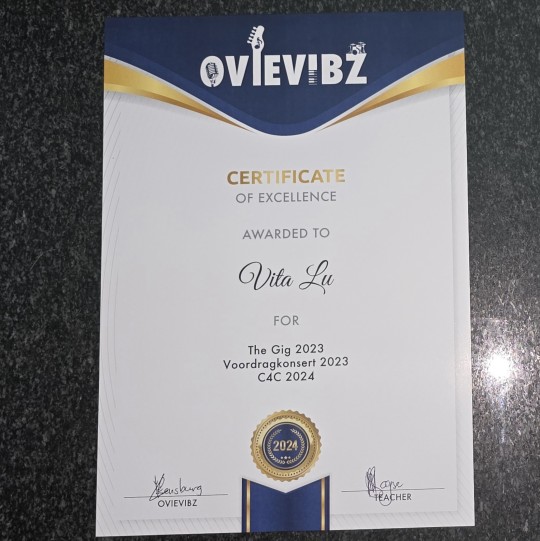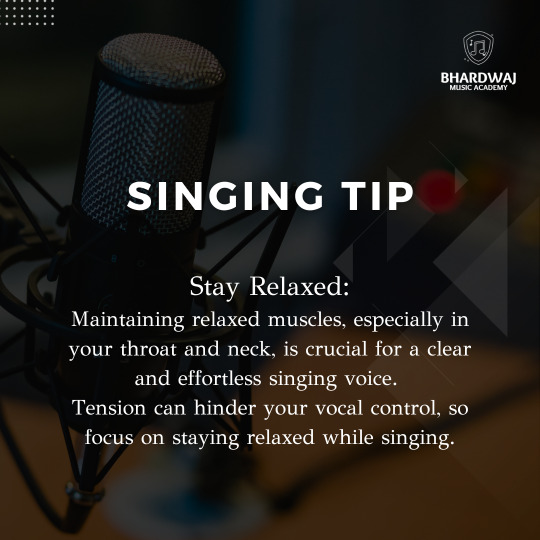#SingingLessons
Explore tagged Tumblr posts
Text
Explore Music Classes in Noida: Western Vocals at Rouble's Guitar School
If you're looking to dive into the world of singing, Rouble's Guitar School in Noida is the perfect place to start. Our music classes course offers an enriching experience for singers of all levels. We focus on building strong vocal foundations, from pitch accuracy to breath control, all within a personalized learning environment.

What sets our music classes apart is the individual attention each student receives. Whether you’re looking to sing for fun or pursue a professional singing career, we adapt our teaching style to meet your goals. Our experienced instructors are here to guide you through every step of your vocal journey.
Take your voice to new heights with our hands-on approach to music classes in Noida. Explore different music styles, master your voice, and gain the confidence you need to perform. Ready to sing your heart out? For more details, visit our website!
0 notes
Text
Enhance your vocal skills with Kiya Learning's Singing Classes in Muswellbrook. Whether you're a beginner or aiming for professional-level training, our expert instructors offer personalized lessons to help you hit the right notes. Unlock your singing potential today! #SingingClasses #Muswellbrook #KiyaLearning #VocalTraining #MusicEducation
#SingingClassesAustralia#LearnToSing#VocalTrainingAustralia#SingingLessons#VoiceCoaching#MusicLessonsAustralia#AustralianSingers#VocalClasses#SingingTeachers#MusicEducation#SingingWorkshops#SingAustralia#OnlineSingingClasses#AustralianMusic#VocalPerformance
0 notes
Text
Beginner's Guide to Singing Harmonies: Easy Steps to Learn Vocal Harmony
Singing harmonies adds depth, emotion, and richness to any song, creating a more dynamic and captivating vocal performance. If you're new to singing harmonies, don’t worry! This guide will take you through the basics, helping you understand and practice vocal harmony with easy steps.
What is Vocal Harmony?
Vocal harmony occurs when two or more different notes are sung simultaneously, creating a pleasing and balanced sound. In a typical harmony, one singer sings the main melody, while others sing notes that complement the melody, usually a third or fifth above or below.
Step 1: **Understand the Basics of Intervals**
Harmony is all about intervals— the distance between two notes. The most common intervals used in harmony are **thirds** and **fifths**. For example, if the melody note is C, a third above is E, and a fifth above is G.
- **Tip**: Use a piano or online tool to play simple intervals like thirds and fifths. Get comfortable hearing how these intervals sound against the melody.
Step 2: **Start with Simple Songs**
The best way to start learning harmonies is by choosing simple, familiar songs. Pick a song with a clear melody and limited vocal range, as it’ll be easier to find and follow harmonies.
- **Tip**: Nursery rhymes or simple folk songs are great for beginners. Once you’ve mastered basic harmony, you can move on to more complex genres.
Step 3: **Sing Along to Harmonized Tracks**
Listening to songs that already have harmonies will help you understand how they work in context. Some genres, like gospel, barbershop, and country music, often feature clear vocal harmonies. Sing along to these songs and try to identify the harmony parts.
- **Tip**: Pay attention to backing vocals in popular songs. Many times, harmony parts are already built into the track, and you can practice following along.
Step 4: **Learn to Sing in Thirds**
Singing a harmony a third above or below the melody is one of the easiest and most common approaches. To practice, play a melody on a piano or instrument and then sing the note that is a third above or below it.
- **Tip**: For example, if the melody note is C, sing E for a third above or A for a third below. Practicing scales in thirds can help train your ear.
Step 5: **Use Harmony Apps and Tools**
Technology can be a great asset when learning vocal harmony. There are apps and software available that help you isolate harmonies in songs or teach you how to harmonize.
- **Apps to Try**: **Harmony Helper** and **Chordify** are popular apps that assist singers in finding and practicing harmony parts.
Step 6: **Practice with a Friend or a Recording**
Once you're comfortable with basic harmonies, try singing with a friend or using a recording of yourself. Sing the melody while your friend sings the harmony (or vice versa), and practice staying in your vocal lane without slipping into each other’s notes.
- **Tip**: Recording yourself singing different parts of a harmony and playing them together can be a helpful way to understand how harmonies fit together.
Step 7: **Listen Actively to Harmonies**
Listening to how professional singers use harmony is an excellent way to build your skill. Pay attention to where harmonies come in during the song, how they support the melody, and whether they move in parallel or contrary motion.
- **Genres to Explore**: Listen to gospel choirs, pop ballads, a cappella groups, and even rock bands like **The Beatles** or **Queen**, who were known for their creative harmonies.
Step 8: **Experiment with Simple Chords**
Once you’re familiar with intervals, experiment with singing basic chords. Chords consist of three or more notes played simultaneously (e.g., the root, third, and fifth). Practice harmonizing over chords by singing the different chord tones.
- **Tip**: Start with triads (three-note chords) like C major (C-E-G). Sing each note in the triad to build a more complex harmony.
Step 9: **Train Your Ear**
Developing a strong ear is crucial for harmonizing. Training your ear will help you recognize harmonies more quickly and sing in tune. Use ear-training exercises, such as interval recognition or chord identification, to sharpen your listening skills.
- **Tip**: Singing along with scales and focusing on staying in pitch as you harmonize will strengthen your ear over time.
Conclusion
Singing harmonies might seem tricky at first, but with consistent practice and a step-by-step approach, it becomes much easier. Start by learning basic intervals and singing along to harmonized tracks, then move on to practicing with others or using harmony apps. With patience, you’ll develop the ear and technique needed to sing beautiful vocal harmonies. Keep practicing, and soon you'll be able to effortlessly blend your voice with others to create rich, layered vocal performances!
#MusicEducation#SingingLessons#LearnToSing#SingingHarmonies#VocalHarmony#BeginnerSingers#HarmonyTips#VocalTechniques#MusicForBeginners#SingingGuide
0 notes
Text
Unlock your vocal potential with Kiya Learning's Singing Classes in Australia. Get personalized training from expert instructors, perfect your pitch, and explore various genres in a fun, engaging environment. Join today!
#SingingClasses#LearnToSing#VocalTraining#VoiceLessons#SingingLessons#VocalCoaching#SingingClassesNearMe#SingingForBeginners#SingingSkills#VocalPractice
0 notes
Text
Find Kiya Learning's Singing Lessons for Grown-ups in Austin, Texas! Improve your vocal abilities with personalized preparing, proficient direction, and fun, intuitively sessions. Culminate for tenderfoots and experienced artists alike, our lessons assist you construct certainty, method, and execution capacities. Unleash your melodic ability with Kiya Learning nowadays!

#SingingLessons#VocalTraining#AdultSingingClasses#LearnToSing#VoiceLessons#SingingLessonsForAdults#USA#MusicEducation#SingingCoach#AdultMusicClasses#VoiceTraining#AdultVocalLessons
0 notes
Text
Discover your voice with Kiya Learning's singing classes in Singapore! Our master vocal coaches give locks in, personalized lessons for all ages and ability levels. Improve your vocal procedure, extend your run, and construct certainty through our fun and strong environment. Connect Kiya Learning nowadays and let your singing ability sparkle!
#SingingSG#SingaporeSinging#VocalClassesSG#SingingLessons#SingingInstructorsSG#MusicClassesSG#VocalTraining#SingWithPassion#MusicEducationSG#SingerLife#VoiceLessonsSG#SingingWorkshops#SingYourHeartOut#MusicalTalent#SingingCommunity#VocalSkills#SingWell#SingingStudioSG#MusicSchoolSG#HarmonyInVoice
0 notes
Text
Dis lekker om 'n Ovie-Vibz Music School student te wees. 🤩🥰🎤🎼🎵🎶

0 notes
Text

🎤At Bhardwaj Music Academy, we're here to help you harness your vocal potential. Remember, keeping your throat and neck muscles relaxed is the key to clear, smooth singing. Say goodbye to tension! 🎶
#BhardwajMusicAcademy #vocaltips #vocal #singing #singer #singingtips #singingclasses #singinglessons #learnsinging #music #musician #vocalist #musiceducation #musicschool #musicinstitute #musicacademy
#BhardwajMusicAcademy#vocaltips#vocal#singing#singer#singingtips#singingclasses#singinglessons#learnsinging#music#musician#vocalist#musiceducation#musicschool#musicinstitute#musicacademy
1 note
·
View note
Text
Unlocking the Melodies: The Benefits of Taking Piano Classes

Introduction:
Piano classes offer a gateway to a world of melodies, harmonies, and musical expression. Whether you're a beginner or an experienced musician, learning to play the piano can have a profound impact on your life. In this article, we will explore the transformative power, musical potential, and cognitive benefits of taking piano classes. So, let's dive into the incredible advantages that await those who embark on this musical journey.
The Transformative Power of Piano Classes: Piano classes have the ability to transform individuals in multiple ways. Learning to play the piano requires discipline, patience, and perseverance, teaching students valuable life skills such as focus, dedication, and time management. Moreover, playing the piano can be an excellent stress reliever, providing a creative outlet and promoting relaxation. The act of producing beautiful melodies can uplift the spirit and bring joy to both the player and the listener.
Exploring Musical Potential: The piano is a versatile instrument that allows students to explore various musical genres and styles. From classical to jazz, pop to rock, the piano provides a solid foundation for understanding music theory and composition. Through piano classes, students can develop their musicality, improvisation skills, and interpretation of different musical pieces. The piano acts as a stepping stone to unlock the vast potential of musical expression.
Cognitive Benefits of Piano Classes: Engaging in piano classes offers numerous cognitive benefits. Research has shown that learning to play the piano can enhance cognitive abilities such as memory, attention span, and problem-solving skills. Playing the piano requires the brain to coordinate multiple tasks simultaneously, improving hand-eye coordination, motor skills, and spatial-temporal skills. Moreover, piano classes have been linked to increased creativity, focus, and even improved mathematical abilities.
The Connection between Piano Classes and Music Theory/Composition: Piano classes go hand in hand with music theory and composition. Understanding music theory allows students to read sheet music, analyze musical structures, and interpret complex compositions. Moreover, learning to play the piano provides a solid foundation for aspiring composers. By exploring different chord progressions, harmonies, and melodies, students can unleash their creativity and compose their own musical pieces.
Tips for Choosing the Right Piano Class: If you're considering taking piano classes, it's essential to choose the right instructor and learning environment. Look for a qualified and experienced teacher who can guide you through your musical journey. Consider factors such as the teaching style, syllabus, and class size. Additionally, ensure that the class schedule and location are convenient for you. Taking the time to find the right piano class will greatly enhance your learning experience.
Conclusion: Unlocking the melodies and embracing the benefits of piano classes can be a life-changing experience. From personal growth to musical exploration, cognitive development to creativity, the piano offers an array of advantages that extend beyond the realm of music. So, if you've always dreamed of playing the piano, don't hesitate to take that first step. Start your musical journey today and unlock the transformative power of the piano.
#classicalmusic#learnmusic#music#musicacademy#musicclass#musiceducation#musiclessons#musicschool#musicschoolnearme#musicteacher#dailyguitar#musiclessonsforadults#musiccourse#violinlessons#singinglessons#lesgitar#kursuspiano
0 notes
Text
Signa's Music Studio

Signa’s specialty is teaching voice and piano lessons to young kids! She can help anyone improve their voice and technique and beginner piano skills, and also prepare young singers for auditions, RCM exams, music festivals, and competitions. Signa trains all her students on breath control, diction, expression, musicality, stage presence and vocal technique. Email or call today if interested in beginner piano lessons for you or your child or voice lessons for all ages!

0 notes
Text
https://kiyalearning.com/singing-classes-in-deception-bay/
Unlock your vocal potential with Kiya Learning's Singing Classes in Deception Bay! Our expert instructors provide personalized training for all ages, focusing on pitch, rhythm, and vocal techniques. Whether you're a beginner or aspiring singer, join us to refine your skills and express your unique voice. Enroll today and start singing confidently!
#SingingClassesAustralia#LearnToSing#VocalTrainingAustralia#SingingLessons#VoiceCoaching#MusicLessonsAustralia#AustralianSingers#VocalClasses#SingingTeachers#MusicEducation#SingingWorkshops#SingAustralia#OnlineSingingClasses#AustralianMusic#VocalPerformance
0 notes
Text
How to Identify Your Singing Voice Type: A Step-by-Step Guide for Singers of All Levels
Every singer has a unique voice, and identifying your singing voice type is crucial for maximizing your vocal potential. Knowing your voice type helps you choose suitable songs, improve your technique, and better understand your vocal range and strengths. Whether you're a beginner or an experienced vocalist, this guide will walk you through the process of discovering your voice type, ensuring that you're singing in a way that suits your natural abilities.
Step 1: Understand the Basic Voice Types
In classical singing, voice types are categorized into different ranges for both men and women. These categories are based on vocal range, timbre, and where your voice naturally feels comfortable. Here’s a breakdown:
- **Soprano** (Female): The highest female voice type, known for bright, high-pitched notes.
- **Mezzo-Soprano** (Female): Falls between soprano and alto, with a rich, warm tone.
- **Alto/Contralto** (Female): The lowest female voice type, with deep, rich notes.
- **Tenor** (Male): The highest male voice type, often featuring powerful, resonant high notes.
- **Baritone** (Male): Sits between tenor and bass, with a strong middle range.
- **Bass** (Male): The lowest male voice type, known for deep, rumbling tones.
Step 2: Find Your Vocal Range
Your vocal range is the span of notes that you can sing, from the lowest to the highest. To find your range, follow these steps:
1. **Warm Up**: Always warm up your voice before attempting to identify your range. Humming or singing scales gently up and down can prevent strain.
2. **Use a Piano or Keyboard**: Starting from middle C, play each note and match it with your voice, singing from the lowest comfortable note to the highest. Take note of the lowest and highest pitches you can hit without straining.
3. **Record Your Range**: Write down your lowest and highest notes. For example, your range might span from G3 to C6. This will help you determine which voice category you fall into.
Step 3: Assess Your Vocal Tessitura
Your **tessitura** refers to the part of your range where your voice feels most comfortable. While you may be able to hit certain high or low notes, your tessitura is the range you can sing in comfortably for an extended period. It’s essential to focus on this middle ground when identifying your voice type.
For example, a soprano might have a range that extends into lower notes, but their tessitura will primarily be in the higher part of the range. Knowing your tessitura allows you to focus on the songs that best suit your voice.
Step 4: Identify Your Timbre
Timbre refers to the unique quality or color of your voice. Some voices are bright and piercing, while others are warm and full-bodied. The timbre of your voice can help you identify whether you are a soprano or mezzo-soprano, tenor or baritone, for instance. Here’s a quick way to evaluate your timbre:
- **Record Yourself Singing**: Sing a simple song or scale and listen to the recording. Is your voice light and airy, or dark and resonant?
- **Ask for Feedback**: Have others, especially vocal coaches, give you feedback on how they perceive your voice’s tone and quality.
Step 5: Experiment with Different Songs
Testing your voice with a variety of songs in different genres can give you a better sense of your voice type. If you're a soprano, for instance, you'll likely feel comfortable with higher notes in pop or classical songs, whereas altos or contraltos might feel more at ease with lower-pitched ballads or jazz.
Choose songs that challenge both the lower and upper ends of your range, but make sure you feel comfortable singing them without strain.
Step 6: Consider Your Vocal Weight
Vocal weight refers to the heaviness or lightness of your voice. Some voices are more robust and weighty, while others are light and agile. For example:
- **Light Voice**: Sopranos or tenors with a lighter, more agile voice may excel in fast, intricate vocal passages.
- **Heavy Voice**: Altos or basses often have heavier, fuller voices that resonate deeply and carry power in lower notes.
Your vocal weight can influence which subcategories of a voice type you belong to, such as lyric soprano versus dramatic soprano.
Step 7: Analyze Your Vocal Transitions (Passaggio)
The **passaggio** is where your voice naturally shifts between different vocal registers (chest, head, and mixed voice). Each voice type has specific points in their range where these transitions occur. Identifying your passaggio helps you manage these transitions smoothly, which is vital for finding your voice type. For instance:
- Sopranos often transition between registers higher in their range.
- Baritones and basses may feel this transition in the middle or lower part of their range.
Step 8: Work with a Vocal Coach
While self-assessment is a great start, working with a vocal coach can provide professional guidance on identifying your voice type. A coach can help you fine-tune your technique, explore your range, and pinpoint your true voice classification based on your unique vocal characteristics.
Step 9: Avoid Common Misconceptions
There are some myths surrounding voice classification that singers should avoid:
- **Myth 1: Higher is better**: Many singers assume that being able to hit high notes means you are a soprano or tenor. However, what matters more is where your voice is most comfortable, not how high or low you can go.
- **Myth 2: Your voice type is fixed**: Your voice can change over time due to factors like age, training, and vocal health. It’s important to re-evaluate your voice type periodically.
Step 10: Keep Practicing and Exploring
Voice types aren’t set in stone, and as you continue to practice and develop, your voice will grow. Experiment with different genres, techniques, and styles of music to refine your understanding of your voice.
FAQs
1. **What’s the difference between vocal range and tessitura?**
- Vocal range refers to the full span of notes you can sing, while tessitura is the range where your voice is most comfortable and sounds the best.
2. **Can your voice type change over time?**
- Yes, factors like age, vocal training, and health can affect your voice, causing shifts in range and timbre.
3. **Do I need to hit very high or low notes to classify my voice type?**
- No, it’s more important to focus on your tessitura and where your voice feels naturally comfortable.
4. **Can I belong to more than one voice type?**
- Your voice can sit between categories, but typically one will be more dominant. A vocal coach can help clarify any gray areas.
5. **Is it possible to improve my vocal range?**
- Yes! With consistent practice, proper technique, and vocal exercises, you can expand your range over time.
6. **Why is it important to know my voice type?**
- Identifying your voice type allows you to select songs and techniques that suit your vocal range and strengths, reducing strain and improving your overall performance.
By following these steps, you can identify your singing voice type and begin to sing in a way that suits your natural abilities. Understanding your voice is a powerful tool that can unlock your full potential as a singer.
#SingingVoiceType#VocalTechnique#SingersGuide#VoiceClassification#SingingTips#VocalRange#MusicEducation#SingingLessons#FindYourVoice#VocalTraining
0 notes
Link
#wupples#wupplesguitars#singing#singingvideo#singingcover#singingvideos#singingvines#singingbowl#SingingInTheRain#Singingislife#singinglessones#sing
1 note
·
View note
Text
Discover your voice with our singing classes in San jose, California. Whether you're a beginner or aspiring vocalist, Kiya Learning expert coaches provide personalized instruction in vocal technique, music theory, and performance skills, helping you develop confidence and musicality.

#SingingLessons#VocalTraining#AdultSingingClasses#LearnToSing#VoiceLessons#SingingLessonsForAdults#USA#MusicEducation#SingingCoach#AdultMusicClasses#VoiceTraining#AdultVocalLessons
0 notes
Text
Kiya Learning offers singing classes in Singapore, tailored for all age groups and skill levels. Their experienced instructors provide personalized coaching to enhance vocal techniques and performance skills. With flexible schedules and a supportive environment, Kiya Learning helps students achieve their musical goals. Whether for personal growth or professional aspirations, their classes ensure a fulfilling and enriching experience.
#SingingSG#SingaporeSinging#VocalClassesSG#SingingLessons#SingingInstructorsSG#MusicClassesSG#VocalTraining#SingWithPassion#MusicEducationSG#SingerLife#VoiceLessonsSG#SingingWorkshops#SingYourHeartOut#MusicalTalent#SingingCommunity#VocalSkills#SingWell#SingingStudioSG#MusicSchoolSG#HarmonyInVoice
0 notes
Text


LIVE PERFORMANCE
NG Kerk Wonderpark Wonderliggiefees 31 August 2023 Vocals Song: Multiple Songs
0 notes